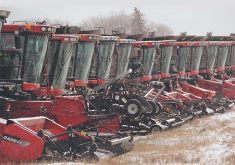SAN ANTONIO, Texas — It was standing room only during the grain marketing sessions at day one of the 2017 Commodity Classic.
Commodity Classic describes itself as is America’s largest farmer-led, farmer-focused convention and trade show.
Bryce Knorr, senior grain market analyst for Farm Futures, said it looks like there will be neutral ENSO conditions for the majority of the 2017 growing season. ENSO is the El Niño–Southern Oscillation.
There is no correlation between crop yields in the United States and a neutral ENSO.
“Basically it’s 50/50 as to whether or not yields are going to be better than average or worse than average,” he told a room packed with farmers.
There are much better odds that Argentina and Brazil will have lower wheat and soybean yields for the crop planted in 2017 and harvested in 2018 and that the Former Soviet Union will have big yields in wheat and coarse grain this year.
Ed Usset, grain marketing economist with the Center for Farm Financial Management at the University of Minnesota, showed farmers his simple one-page, pre-harvest marketing plan for soybeans.
The plan was devised for a farm in southwest Minnesota. Growers should look to start marketing their beans at a cash price of US$9.50 per bushel or a November futures price of $10.25 in the period ending April 11.
That is the cost of production for producing soybeans in that region including a modest return for family living.
Read Also

Bunge’s crop mix is changing
Bunge has predominantly been a soybean processing firm, but that’s about to change after the merger with Viterra with softseed processing and grain merchandising gaining ground.
“I’m not interested in pricing below that,” he said.
Prices are currently above that level, so it’s a good opportunity to lock in beans. His minimum price rises as different decision dates come up throughout the spring.
Jim Mintert, director of the Center for Commercial Agriculture at Purdue University, said cost of production for corn on average farmland in Indiana has fallen since the ethanol era highs of 2012 and 2013, but it still costs more to produce the crop than it returns.
The big drop in costs has been fertilizer and cash rents. Seed costs are up and so are pesticide costs.
“Our challenges as an industry is to find ways to become more efficient and reduce production costs over these next several years,” he said.
Dave Widmar, senior research associate with the same center, said times are tough in agriculture but producer optimism is recovering.
The center surveys 400 farmers every month and produces an agriculture economy barometer from the results.
The project began in October 2015 and the sentiment meter averaged 100 between then and March 2016. It fluctuated up and down in a narrow range between October 2015 and October 2016 and then something happened.
Producer sentiment has steadily climbed to 153 through January 2017.
“Something changed post-harvest,” said Widmar.
He paused and the laughter in the audience grew as people figured out what he was referring to.
“There is definitely some correlation between the November election results and producer sentiment,” said Widmar.
The exact same thing is happening in the U.S. economy as a whole. Consumer sentiment was at 13-year highs in December and January.
Despite the optimism there is still a lot of pain in the U.S. farm economy. Fifty-eight percent of farmers surveyed say their operation is financially worse off than it was a year ago.
Contact sean.pratt@producer.com
















